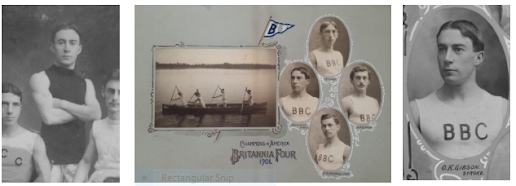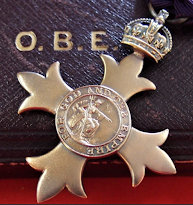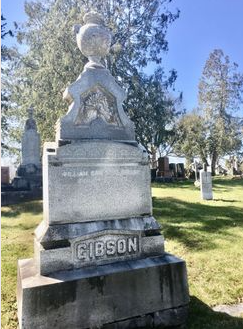#13 TWO WHO SERVED
Mona & OK
World War I broke out in August 1914 and a truce was finally called on November 11, 1918. Over 600,000 Canadian men served in the Canadian Expeditionary Force. Canadian nurses played a big part in the fight but their role is often overshadowed by the soldiers’. At the beginning of the war, there were five permanent force nurses and 57 listed in reserve; by 1918, 3,141 nurses had volunteered and 2500 served overseas. The Canadian Nursing Sisters were unique among nurses in that they were classified as officers, a rank not afforded nurses in other countries; their commissioned status meant the Canadian Nursing Sisters received pay equal to their male counterparts and the respectability due their rank. All Canadian nurses entered the Army Medical Corps at the level of Lieutenant and earned $4.10 a day. And as they were enlisted members of the armed forces, they were eligible to receive pensions for war-related injuries (but not health).
The Canadian Nursing Sisters were nicknamed the “bluebirds”. Their uniforms were sky blue cotton with the two Lieutenant stars on the shoulders. White aprons, with straps crossed in the back, went over the long dress; sheer white veils were worn on duty. The dress uniform was a navy blue serge. They wore navy blue jackets with a high round collar edged with scarlet and white. For inclement weather, there was a long navy coat or navy cape lined with scarlet. Army black boots completed the official uniform.
The year, 1915, was not a good one for the Allies. The
Germans had declared a submarine blockade against Britain, the Allies suffered
great losses in the Battle of Gallipoli and on April 22, at the Second Battle
of Ypres, the Germans opened the valves and released almost 200 tons of
chlorine gas along a 4k front. Six
thousand troops died within ten minutes. The Canadians improvised by covering
their faces with urine-soaked scarves, but more than 6,500 Canadians were
killed, wounded or captured in this battle. The need for many more medical
staff was obvious.
Mona Whelan was 26 years old when she enlisted in the Canadian Army Medical Corps (CAMC). Mona was born in Admaston Township, Renfrew County, the youngest of thirteen children of Stephen Whelan (1825-1906) and Hannah O’Gorman (1848-1919). Mona was a fully-trained graduate nurse. (quite likely from either Royal Victoria or Montreal General Hospitals.) She was 5’6” and weighed 148 pounds. She enlisted in the Canadian Medical Corps in Montreal on June 3, 1915 and was aboard a ship sailing to England the next day.
The First World War was a time of great change and
innovation in military medical services. At first medical units were set up in
hospitals but these were distant from the fight. Casualty Clearing Stations
provided a faster assessment and more effective treatment to the injured at the
front line. But the proximity to the
fighting exposed the Nursing Sisters to attacks from air raids and shell fire.
About 45 Nursing Sisters died in the war from enemy attacks, including the
bombing of a hospital and sinking of a ship, and from diseases.
Mona was not sent to France and the front; instead she nursed
in England where Canada operated a number of hospitals including 16 general, 10
stationary, 7 special and 8 convalescent hospitals. Mona first nursed at Shorncliff
Hospital in Kent, and at the end of 1915 was transferred to the Canadian Westcliffe
Eye and Ear Hospital at Folkestone.
Nurses, like Mona, had exhausting workloads dealing with so many sick and injured soldiers. The large-scale use of weaponry such as machine guns and artillery, coupled with the deployment of armies into the trenches, meant that, if suffered, the wounds could be very serious. In France, there were 5 casualties for every 9 men sent “over the top.” Machine gun bullets could fracture bones and pierce organs and the wounds got infected by the polluted mud of the Western Front trenches. The severity of these mutilations was unprecedented. All parts of the body were at risk—head, shoulder, torso, intestines, buttock, leg, foot. Artillery shells could easily remove men’s limbs; over 41,000 men had limbs amputated during the war—of these 69% lost one leg, 28% lost one arm, and nearly 3% lost both arms or legs. Another 272,000 suffered injuries in the arms or legs that did not require amputation. 60,500 were wounded in the head or eyes. There were no antibiotics and disinfectants were crude and insufficiently supplied. Thousands died of tetanus or gangrene before any effective antidote was found.
Nurses assisted in surgery and had primary responsibility for cleaning wounds and watching for secondary infection. They cared for wounds daily, bandaging and rebandaging injuries. They nursed soldiers through dysentery, trench fevers, influenza, and pneumonia.
And then there were the many men who suffered from shell-shock or PTSD, a “reaction to the intensity of the bombardment and fighting that produced helplessness appearing variously as panic, being scared, flight, an inability to sleep reason, talk or walk..” Doctors diagnosed almost 100,000 Canadians with shell-shock. Medical treatment varied from the Freudian techniques of talking and physical therapy to extreme methods like electric shock therapy where patients were electrocuted in the hope of stimulating paralysed nerves, vocal chord or limbs. Shock therapy was more effective in returning soldiers to the front, but how many relapsed after they re-entered combat?
They were called Angels of Mercy but trying to provide comfort and relief to the many sick and injured also took its toll on the Nursing Sisters. “It was nasty work a lot of the time. It was very emotional because young guys came in and you got 18-year-old kids with their legs blown off. Not everyone can take that day in and day out.” Mona, herself, was hospitalized for bronchitis and influenza and in April 1917, she was discharged with an influenza disability. She complained of feeling weak when on her feet all day and in March 1917 lost 12 pounds. “The Nursing Sister [Mona Whelan] was taken ill on 13-4-17 with fever, rapid pulse, cough and pain in left chest. The fever has passed but the Sister is still weak and debilitated. The family history is not good. Sputum report and chest examination negative for TB lesion. This Nursing Sister may be reboarded in any convenient area.” It was concluded that military service had caused “strain of service and infection” and Mona was discharged from the hospital on May 21, 1917 and permitted to resign on August 8, 1917. Because her discharge was for illness, not a war-related injury, she may not have been eligible for a pension.
Lieutenant-Colonel Orland Kingsley Gibson* was Deputy
Director of Dental Services for the Canadian army and he most likely met Nursing
Sister Mona Whelan when hospitalized in London in January and February 1917 for
neurasthenia and bronchitis. He was granted official permission to marry on
August 25, 1917 and they were married a week later in Bloomsbury Baptist
Church, London. Had Mona not already resigned her commission, she would have had to do so to marry OK.
O.K. was Methodist. On marriage, Mona converted from Catholicism to Methodism. Who knows how her family reacted to this? Did they shun or disown her? Keep in distant touch? It is hard to believe (or maybe not) how rigid and divisive religion could be! (Her parents' names were not recorded by her son on her cemetery entry, perhaps also suggestive of a family rift and that he did not know his maternal grandparents.)
O.K. was born in Morrisburg, Ont. but his parents moved to Ottawa a year later. His father founded the W.C. Gibson & Son Biscuit Company, which became, at that time, the leading biscuit firm in Eastern Ontario. In his youth, O.K. was active in many sports; he played football and hockey with Ottawa teams. In high school in 1895 he won the all-round athletic championship winning long jump and placing second in each of the half-mile, mile and triple jump—not bad for a young man of moderate statue who, fully grown, would not exceed 5’6” in height. In 1897, he was President of the school’s literary and debating society.
O.K. entered Toronto University in 1897 for an arts course and played Varsity hockey and canoeing. It is possible that, in September 1899, he tried out for the Ottawa Roughriders as quarterback, but when that didn’t work out, he decided to go to Dental School at UofT. Sometime after dental school, he joined the Britannia Boating Club and became competitive in canoeing. In an Open Fours Category, he stroked his team to Canadian and American Championships winning “Champions of America” titles in 1901 and 1902. His 1902 championship was won after his graduation from dental school.
O.K. is top left of team photo
In 1902 he set up a dental practice in Ottawa. Two years
later, he joined the Militia as Second Lieutenant, and then was promoted to
Lieutenant. Evidently, not content with his dental practice and militia drills,
he continued his competitive canoeing, won several titles and became Commodore
of the Canadian Canoe Association. And somewhere along the way, he learned
piano and accompanied singers. He was involved in many local and regional
dental societies.
In 1912, O.K. married Hazel McNeill. They had a daughter, Iris Janette. In August 1914, Hazel died of meningitis, age 28. On the 1921 census Iris was living with her paternal grandmother and spinster aunts. (It appears Iris was an exceptional student throughout public school. She graduated from UofT with a BA and was involved with radio broadcasting and on her second marriage** moved to England.)
On May 12, 1915 O.K., age 32, enlisted in the Canadian Army Dental Corps. Because of his 13 years in the militia, his rank was that of Major. He sailed for England on June 23, 1915. He was granted special leave on August 25 to return to his sick wife, but Hazel passed before he was able to get home.
When the First World War began, many recruits were being rejected for dental reasons. Good dental hygiene was vital to any military. Many working-class and lower middle class soldiers had very poor teeth—the result of too much sugar and too little dentistry. Toothaches and ensuing chewing problems, and dentures and teeth broken on the rations of hard biscuits and bully beef meant that men had to be withdrawn from the fighting front for treatment. Losing a set of false teeth rendered a soldier useless because conditions on the front didn’t allow for a soft-food diet for toothless men. Tooth loss affected soldiers’ ability to use gas masks because they didn’t have enough teeth to grip the interior mouthpiece of the gasmask.
On May 13, 1915, the Canadian Army Dental Corps was formed as a separate corps within the Canadian Army and it began operations overseas in July 1915 with 30 Dental officers and 74 other ranks—a ratio of 1 dentist for every 1400 personnel. By December 1918, over 2.2 million dental treatments were performed; this included 97,000 treatments for British troops and 50,000 treatments for “trench mouth”(ulcerative gingivitis). Another 1.4 million treatments were provided in Canada. The treatment of facial bone and soft tissue and dental injuries and wounds was another important role of the CDAC. When the war ended in 1918, the CDAC had increased to 223 officers and other ranks serving in stationary hospitals, field hospitals and field ambulances. Seven officers and ten other ranks died in action. In addition 10 Orders of the British Empire were awarded to CADC personnel.
In 1917 O.K. was appointed Deputy Director of the CADC. He was back and forth between Canada and London several times “on duty” in 1917 and 1918. One record shows he arrived in New York on the Aquitania with his new wife, Monica, and his duty destination was listed as the Chateau Laurier in Ottawa (pretty comfortable lifestyle.)
O.K. ended his military career with the rank of lieutenant-colonel.
He was decorated as a Member of the Most Excellent Order of the British Empire
(MBE) by King George V at Buckingham Palace on June 14, 1918. He was promoted
to Officer of the Most Excellent Order of the British Empire (OBE) on June 3,
1919, also by the King at Buckingham Palace.
Promotion within the Order in less than a year appears to be quite rare
and a significant event itself. No
records or citations exist as to what triggered the OBE decoration.
O.K. Gibson passed on September 15, 1951, aged 73, at his home at 9 Thornton Ave., Ottawa. Mona passed away on February 24 1977, aged 84. Both wives, Hazel and Mona, are interred with O.K. in the Gibson family plot (Section 50, lot 28) in Ottawa’s Beechwood Cemetery. But while Hazel's name is inscribed on the side of the monument, along with OK's 2 sisters, Mona, who was married to OK for over 30 years and who survived him by another 26 years is not listed on the main family monument, but on a separate flat marker off to the side. Another family puzzle!
Two weeks ago, Mona was only a name on my family group sheet. Her and O.K.'s stories of service are only a hundred years old, yet they have been lost to our family memory. None of our Whelan generation had any clue about the existence and contributions of their great-aunt and great-uncle. This just proves how easy it is for families to lose touch; it just shows the importance of passing on family stories to the next generations.
Monica “Mona” Marion Whelan
b.
Mar 19, 1889 in Douglas, Admaston Twp, Renfrew Co.
m.
Orland Kingsley Gibson on Sept 1, 1917 in London England
d.
Feb 24 1977 in Ottawa, Ont
Steve’s great aunt
*I found most of the information about Kingsley Gibson in the December 2018 newsletter of the Royal Canadian Dental Corps Association. The article, entitled "A Lost Piece of Dental Corps History. Lieutenant-Colonel Orland Kingsley Gibson O.B.E.,M.B.E.,DDS" was authored by Scott Becker, but he got most of his research from family historian, Susan Gibson. http://rcdca.cfdental.ca/wp-content/uploads/2018/12/RCDCA-newsletter-2018-final-web.pdf
**Btw: Kingsley’s son-in-law was Gordon Tanner, a Canadian
actor who played as a general in Dr.Strangelove and other movies. (more research needed ) https://www.themoviedb.org/person/117301-gordon-tanner















.PNG)




Your account of this (until now) unknown relative is very interesting from so many perspectives, and leaves many wonderings about why we were unaware of her existence. For myself, I am left wondering about the origin of my own mother’s name, also Mona (Monica) Whelan. As the oldest daughter in her family, I wonder if she was given this name as an homage to her aunt, who seems to have been mysteriously isolated from the rest of the family, but obviously not forgotten. It seems more than coincidental. Certainly her choice to leave the Catholic faith when she married must be a consideration; most of our generation (grandchildren of Stephen and Isabella) have certainly experienced the commitment to the Catholic faith as a strong family ideal.
ReplyDeleteYour research and this blog is so appreciated Carole!!!! A gift to us and for generations to come!!!! ❤️
Thanks, Patricia.
DeleteThis is the first I've heard about your blog. An email showed up in my spam folder this morning so I was hesitant to open. I'd bet my bottom dollar that mom was named after this Mona and I agree that she was probably not spoken of because of her religious conversion. I'll have to read some of your other articles. Thanks for doing this! Catherine
Delete